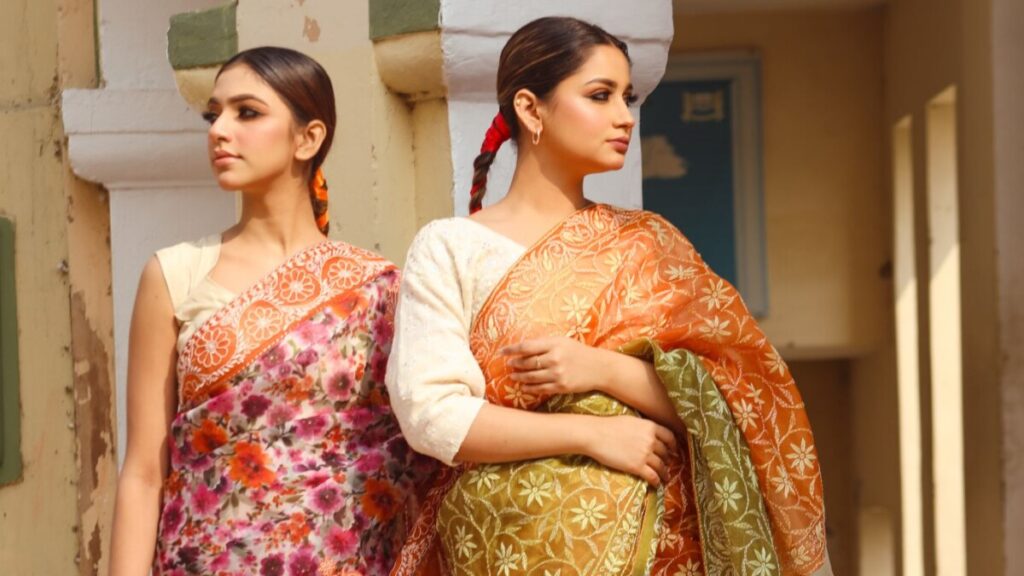The Legacy of Chikankari Embroidery: Tracing its Origins and Evolution

Introduction to Chikankari Embroidery
Chikankari embroidery is one of India’s most cherished art forms, known for its delicate beauty and intricate craftsmanship. Originating in Lucknow, this traditional embroidery style has a rich history that spans centuries. Its timeless appeal lies in the elegance of its hand-stitched patterns and the cultural heritage it represents.
The origins of chikankari embroidery are often traced back to the Mughal era, with some accounts crediting Empress Noor Jahan for popularizing the craft. Over time, this exquisite embroidery evolved, adapting to different styles and trends while retaining its core essence of simplicity and sophistication. The art form has not only survived the test of time but has also become a symbol of India’s textile heritage.

The Different Styles of Chikankari Embroidery
Chikankari is not a monolithic art form; it encompasses a variety of styles and techniques that make each piece unique. The different styles of chikankari embroidery are defined by the stitches and motifs used, which often draw inspiration from nature. Common styles include:
- Bakhiya (Shadow Work): Stitches on the reverse side create a shadow effect on the fabric.
- Phanda (Knot Work): Small knots are used to add texture and dimension.
- Jali (Net Work): A mesh-like pattern is created by delicately separating the threads of the fabric.
- Tepchi (Running Stitch): A simple yet elegant stitch often used for outlining designs.
Each style contributes to the intricate beauty of chikankari embroidery, showcasing the versatility of this craft. These styles are not only visually appealing but also reflect the artisan’s skill and dedication.
The Cultural Significance of Chikankari
Beyond its aesthetic appeal, chikankari embroidery holds a deep cultural significance. It is a testament to India’s rich textile traditions and the creativity of its artisans. Historically, chikankari was primarily done on muslin fabric using white threads, symbolizing purity and elegance. Over time, the craft has expanded to include vibrant colors and diverse fabrics, making it more versatile and accessible.
This embroidery has been a part of royal attire, bridal ensembles, and everyday wear, cementing its place in India’s cultural fabric. The intricate patterns and motifs often tell stories of nature, mythology, and Mughal influence, making each piece a work of art.

The Evolution of Chikankari Embroidery
The journey of chikankari embroidery from traditional to contemporary fashion is a fascinating one. While its roots lie in Lucknow, the craft has gained global recognition, thanks to the efforts of artisans and designers who have preserved and promoted it.
Today, chikankari is no longer confined to sarees and salwar suits. Designers have reimagined this traditional embroidery on modern silhouettes like gowns, lehengas, and even western wear. This evolution has ensured that chikankari remains relevant in a rapidly changing fashion landscape, bridging the gap between tradition and modernity.
Why Chikankari Still Captivates the World
What makes chikankari embroidery so enduring is its ability to adapt while staying true to its roots. It embodies the artistry, patience, and heritage of the artisans who painstakingly create each piece. Despite the advent of mechanized embroidery, the hand-stitched charm of chikankari continues to captivate fashion enthusiasts worldwide.
Moreover, the demand for sustainable and handcrafted fashion has further boosted the popularity of chikankari. By supporting this art form, one not only owns a piece of India’s cultural heritage but also contributes to the livelihood of skilled artisans who keep this legacy alive.

Conclusion
The legacy of chikankari embroidery is a story of resilience, creativity, and cultural pride. From its humble beginnings in the Mughal courts to becoming a global fashion phenomenon, chikankari has traversed an incredible journey. Its different styles, rich history, and enduring appeal make it a treasure trove of Indian artistry.
As we celebrate the beauty of chikankari embroidery, we honor the artisans who have dedicated their lives to preserving this craft. Let us continue to cherish and promote this timeless art form, ensuring that its legacy endures for generations to come.

